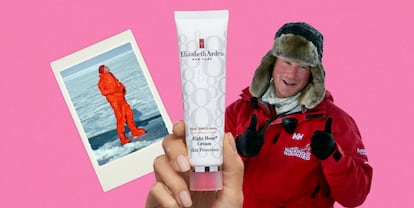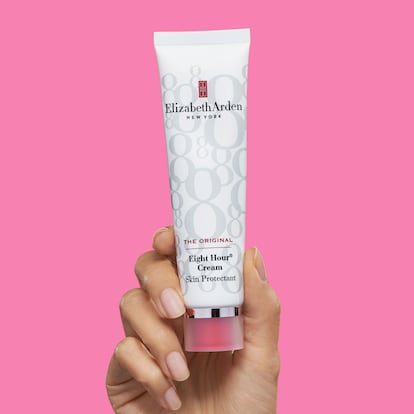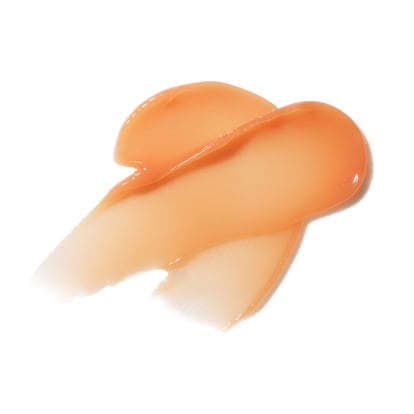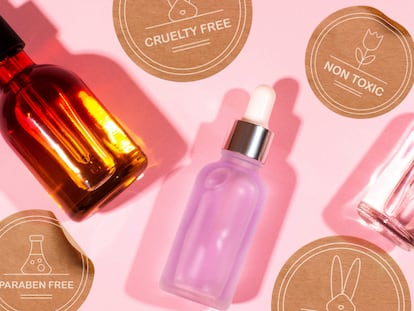The history of the ‘miracle’ cream that Prince Harry used to cure his frostbite
Before the Duke of Sussex’s revelation, a jar of Elizabeth Arden’s legendary Eight Hour Cream sold every 30 seconds somewhere in the world. Now the product is back in the headlines, but it’s been a customer favorite for nearly 100 years

The headline practically wrote itself, and it was clickbait besides. All the British tabloids screamed that Prince Harry had treated his frostbitten penis with an iconic skin cream that costs less than €40 (around $44). In his memoir Spare, the Duke of Sussex revealed that he’d used the famous Elizabeth Arden Eight Hour Cream to relieve his frostbite symptoms during his March 2011 North Pole expedition with wounded veterans from the war in Afghanistan. Harry also disclosed that his mother, Princess Diana, had used the same cream for her lips. His book describes the episode as follows: “I’d been trying some home remedies, including one recommended by a friend. She’d urged me to apply Elizabeth Arden cream.” Harry remembers telling her, “My mum used that on her lips. You want me to put that on my todger?” She replied, “It works, Harry. Trust me.” He went on to write that when he opened the tube of cream, he felt that his mother was “right there in the room.”
Since Harry’s use of the cream became public knowledge, Elizabeth Arden’s Eight Hour Cream has been flying off the shelves at Boots, a well-known British drugstore. Unsurprisingly, product searches shot up 184% in a week, and according to the chain, sales have increased 62% over the previous year. But the cream was already a bestselling classic before Prince Harry’s revelation. In 2022, a tube of Eight Hour Cream was sold every 30 seconds somewhere in the world, which translates to one purchase every two minutes in the U.K. alone. The effect of Harry’s announcement is fascinating, if not unexpected: whenever a celebrity claims to use a drugstore cosmetic, especially if it is an affordable product, his or her endorsement automatically boosts interest and sales. But while Harry shone an unexpected spotlight on the cream, Elizabeth Arden’s Eight Hour Cream Skin Protectant has been forging its own legend for nearly 100 years.

The history of a cult favorite
Very few beauty products can boast of having the Eight Hour Cream’s enduring legacy and popularity. Fewer still can claim to have so many different uses; because of its versatility, it has become a staple for royalty, professional makeup artists, models and a long list of high-profile celebrities. It serves as both a skin treatment (it moisturizes, soothes and protects) and a cosmetic: it can be used as a makeup primer (just ask Reese Witherspoon’s makeup artist, Molly Stern), and it can serve to style eyebrows and tame so-called baby hairs. Marilyn Monroe reportedly used it as a moisturizer, and Claudia Schiffer once proclaimed that it was “addictive.” Kim Kardashian and model Jessica Stam have both said that they occasionally use it to achieve a glossy eye effect. The cream is one of legendary makeup artist Pat McGrath’s favorite products for brightening cheeks, and her colleague, the well-known Sir John, employs it to extend the wear of eye shadow. Model Behati Prinsloo has been known to apply the cream during flights to soothe her dehydrated skin. Victoria Beckham has called it “the best thing in the world for chapped lips, elbows and knees”; apparently, she couldn’t live without the stuff. Much has been written about this cream, but probably the best description of all was given by model and photographer Bibi Cornejo Borthwick, the daughter of designer Maria Cornejo and photographer Mark Borthwick. Her French grandmother taught her the cardinal rule of Eight Hour Cream: “if there’s ever anything wrong on your body, just put that on it.”
The famous cream is extremely versatile, but it is not actually a cream; its texture is more like an ointment or a thick Vaseline. In 1930, Canadian-American businesswoman Elizabeth Arden invented this shiny apricot-colored ointment to heal wounds on her thoroughbred horses’ legs. Legend has it that Arden’s friend applied the balm to her son’s scraped knee, and within eight hours the child’s skin had regenerated; thus, a myth (and a product name) was born. At the time, Elizabeth Arden owned about 150 luxury salons in the United States and Europe, all of which featured a distinctive red door. Indeed, the characteristic Arden door still appears on the iconic cream’s packaging today. Both that logo and the brand are well known. “There are only three American names known in every corner of the world: Singer Sewing Machines, Coca-Cola and Elizabeth Arden,” Arden once said.
Actually, Florence Nightingale Graham — Arden’s original name, given to her by her parents, a Scottish-born pharmacist and a Cornish housewife — started out studying nursing in Toronto and then followed her brother to New York. She got a job as an assistant at E. R. Squibb Pharmaceuticals Company, where she learned about skin care in the laboratory. From there, she went on to work briefly for Eleanor Adair, a British-born beauty entrepreneur and pioneer in opening salons and selling cosmetics around the world. Adair was known for her “salon treatments for girls,” such as a cutting-edge manual massage of gentle finger pats on the face to reduce wrinkles and lift and correct sagging tissue, combined with a vibrating massage with an electric tool to firm muscles and stimulate nerves.
With that apprenticeship under her belt and a $6,000 loan, Arden adopted a new first and last name (Arden was the name of a nearby farm) and opened her first Red Door salon on Fifth Avenue in Manhattan in 1910. It had three treatment rooms, and she led a staff of three specialists. Two years later, she traveled to Paris to learn the beauty treatment and facial massage techniques that were already common in the French capital’s salons. Arden returned from France with the ideas that she employed to build her empire: she developed the first cosmetic line of blushes and sun powders for New Yorkers; expanded her products to include eye and lip makeup and nail polish; created the first travel-size cosmetics line; and founded the first salon to offer training courses for saleswomen.

In 1930, Elizabeth Arden used her knowledge to create her successful cream, which was marketed as the Eight Hour Cream. Since then, the product’s marketing and formula have barely changed. It is a combination of skin-softening petroleum jelly (which works as an effective occlusive agent), anti-inflammatory salicylic acid (a beta-hydroxy acid that also has keratolytic and antibacterial properties) and vitamin E (an antioxidant). In addition to the original cream, a fragrance-free version is now available.
The brand describes the Eight Hour Cream as a cult favorite that softens, repairs, protects and soothes the skin in every situation; it’s an “all-around” beauty treatment. The Eight Hour formula, the company says, “soothes minor skin irritations caused by the sun, wind, rubbing or friction; it protects the face, nourishes chapped lips, softens dry hands, cares for cuticles and reduces roughness on the heels and soles of the feet.” The brand also mentions the two most common ways makeup artists utilize the product as a cosmetic: as a highlighter by dabbing a small amount onto the skin of the temples, eyelids and cheeks after using a BB Cream, and as an eye enhancer by applying eye shadow with a small amount of the balm.
A large number of reviews on the internet attest to the cream’s popularity and versatility. Influenster, a go-to source on cosmetics for U.S. shoppers, gives the product a 4.6 rating out of five. Reviewers highlight its countless uses, from serving as a soothing balm for a post-cold red nose to being a helpful product for eczema. Those who offer some criticism say that what they initially disliked (the product’s lack of fragrance or the strangeness of its very creamy texture) is no longer an issue after learning to use it properly (e.g., warming it in their fingers before use). The cream also has almost 9,000 ratings on Amazon and the same score; reviewers agree about the cream’s effectiveness... and about its curious smell.

After developing the Eight Hour Cream, Elizabeth Arden continued to innovate in the beauty industry until her death in 1996 (her brand was bought years later by French Fragrances, Inc. and then by Revlon in 2016). In 1934, she founded her famous spa in Mount Vernon, to which American high society flocked. In 1935, she launched the best-selling perfume Blue Grass. And the brand was one of the first companies to advertise on movie screens. But nothing has overtaken Elizabeth Arden’s versatile cream. Now, we also know that it can be used on our private parts. At least according to Prince Harry.
Sign up for our weekly newsletter to get more English-language news coverage from EL PAÍS USA Edition
Tu suscripción se está usando en otro dispositivo
¿Quieres añadir otro usuario a tu suscripción?
Si continúas leyendo en este dispositivo, no se podrá leer en el otro.
FlechaTu suscripción se está usando en otro dispositivo y solo puedes acceder a EL PAÍS desde un dispositivo a la vez.
Si quieres compartir tu cuenta, cambia tu suscripción a la modalidad Premium, así podrás añadir otro usuario. Cada uno accederá con su propia cuenta de email, lo que os permitirá personalizar vuestra experiencia en EL PAÍS.
¿Tienes una suscripción de empresa? Accede aquí para contratar más cuentas.
En el caso de no saber quién está usando tu cuenta, te recomendamos cambiar tu contraseña aquí.
Si decides continuar compartiendo tu cuenta, este mensaje se mostrará en tu dispositivo y en el de la otra persona que está usando tu cuenta de forma indefinida, afectando a tu experiencia de lectura. Puedes consultar aquí los términos y condiciones de la suscripción digital.
More information
Archived In
Últimas noticias
Most viewed
- Sinaloa Cartel war is taking its toll on Los Chapitos
- Oona Chaplin: ‘I told James Cameron that I was living in a treehouse and starting a permaculture project with a friend’
- Reinhard Genzel, Nobel laureate in physics: ‘One-minute videos will never give you the truth’
- Why the price of coffee has skyrocketed: from Brazilian plantations to specialty coffee houses
- Silver prices are going crazy: This is what’s fueling the rally










































